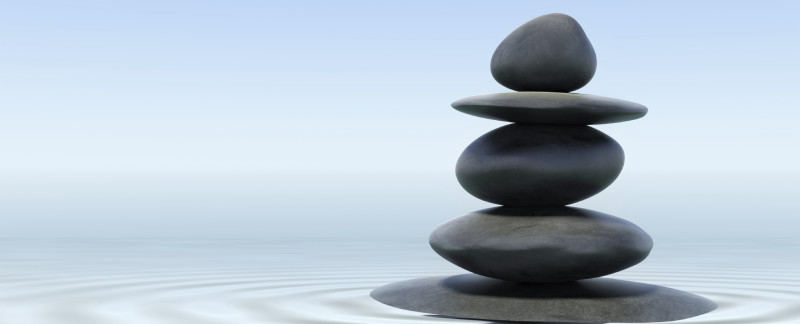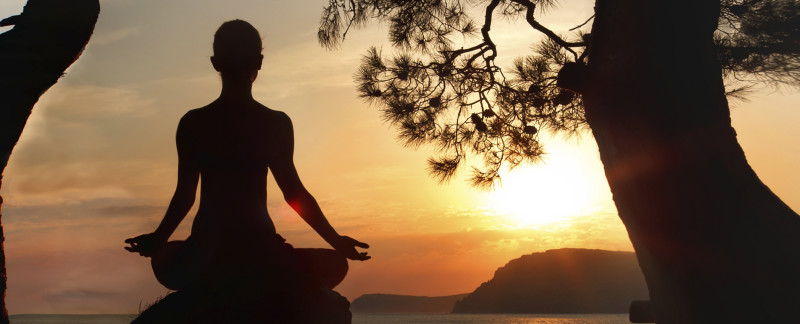by Jeff Schwamberger
I have to confess I’ve always been utterly baffled by the Buddha’s teaching on the Five Skandhas—the so-called “aggregates” that trick us into thinking we have a self when we really don’t.
Okay, worse than baffled. Totally, teeth-grindingly annoyed.
For starters, the English words used to translate the Pali terms seems hopelessly abstract, and different traditions and different teachers use different abstractions—the term “sanna” alone is translated as perception, conception, apperception, cognition, and discrimination. Worse, the English words are such a grab bag of approximations, my everyday intuitive understanding of the words not only gets me nowhere, it just confuses me even more. And when I think I’ve finally got some sort of inkling about the sort of experiences that fit into each of the skandhas, it’s still all so totally arbitrary I can’t get the model to map either neatly or completely to what I’m experiencing in my head.
So when Forrest gave his talk last week on the Skandhas, I once again found myself at the end of the evening with clenched jaw and knitted brow.
But after wrestling with the skandhas for a few days, I think I finally got a tiny little glimmer of insight into what they’re all about. The key was Forrest’s wonderfully simple definition of the skandhas as “the stuff that makes up our concept of the self.” I realized I was so distracted by my inability to grok the Buddha’s abstract model of the skandhas that I was missing the whole point, namely, what they do. The Trick They Play.
The trigger was my remembering an experience I had about three years ago that I’ve taken to calling “The Tale of the Bodhisattva Fly.” It was just this time of year, a beautiful May day, the sun was shining, the birds were singing, there was a gentle breeze wafting through the tree tops. I settled on my cushion for a blissful half hour of meditation, just let my body breathe, and all was right with the world. For about five minutes. Then bzzzzzzz. This dang fly started buzzing around. Then it would alight, I’d go back to my breath, and a minute later bzzzzzzzzz. Effing fly, I’d think. Gosh darn it. Then it would alight, I’d go back to my breath, and a minute later bzzzzzzzzz. But after about the fourth or fifth time, suddenly I realized, wait, wait, wait—
There’s a fly.
The fly’s wings beat, setting up sound waves in the air.
The sound waves hit my ear.
My sense perception of the sound waves sends a signal to my brain that rightly interprets the sound and recognizes that there’s a fly in the room.
PERIOD.
I’m the one who’s adding the annoyance. The annoyance is extra. There’s just fly, sound waves, sense perception, accurate mental image.
That little insight seemed so significant to me that I wove a little tale so I wouldn’t forget it — The Tale of the Bodhisattva Fly: Some bodhisattva somewhere allowed himself to be reborn as a fly and made a point of finding its way into my room just so I could have that tiny little photon of insight.
What Forrest’s wonderfully simple definition of the skandhas did was let me make another connection that I’ve been feeling myself on the edge of but just couldn’t quite get a handle on. To wit:
Just as I’m adding the annoyance, the annoyance is adding the “I”.
There’s no annoyance without a “me” to be annoyed. A concept of self evolves when the totally natural Object to Perception to Mental Image process picks up momentum and sets off the totally unnecessary chain reaction “I” Find That Unpleasant > “I’m” Annoyed > “I’m” Gonna Fix It, “I’m” Gonna Kill That Fly.
In Thundering Silence (maybe “buzzzzing silence,” in my case), Thich Nhat Hanh says, “There is a simple and general way to explain no-self, which is that there is no single entity whose identity is changeless. All things are constantly changing. Nothing endures forever or contains a changeless element called a ‘self’.”
The metaphor that works for me is to think of this moment-to-moment experience as like a heads-up display in a fighter jet, constantly changing, accurately reflecting what’s going on out there, letting the pilot control and navigate the craft. Just as the body simply breathes in and out, the mind is simply aware moment to moment. Oh, there’s a pilot all right, very real, totally alive, but he simply arises in each moment and changes in the next just like the ever-changing readings on the display. Neither would be of any use otherwise.
So there’s a pilot, but there’s no need to get tricked into imagining there’s a hero, a drama, a crisis, Tom Cruise. That’s all extra.
And it somehow maybe sheds a photon or two of light on that unfathomable admonition that when we sit, there’s no one to be.



